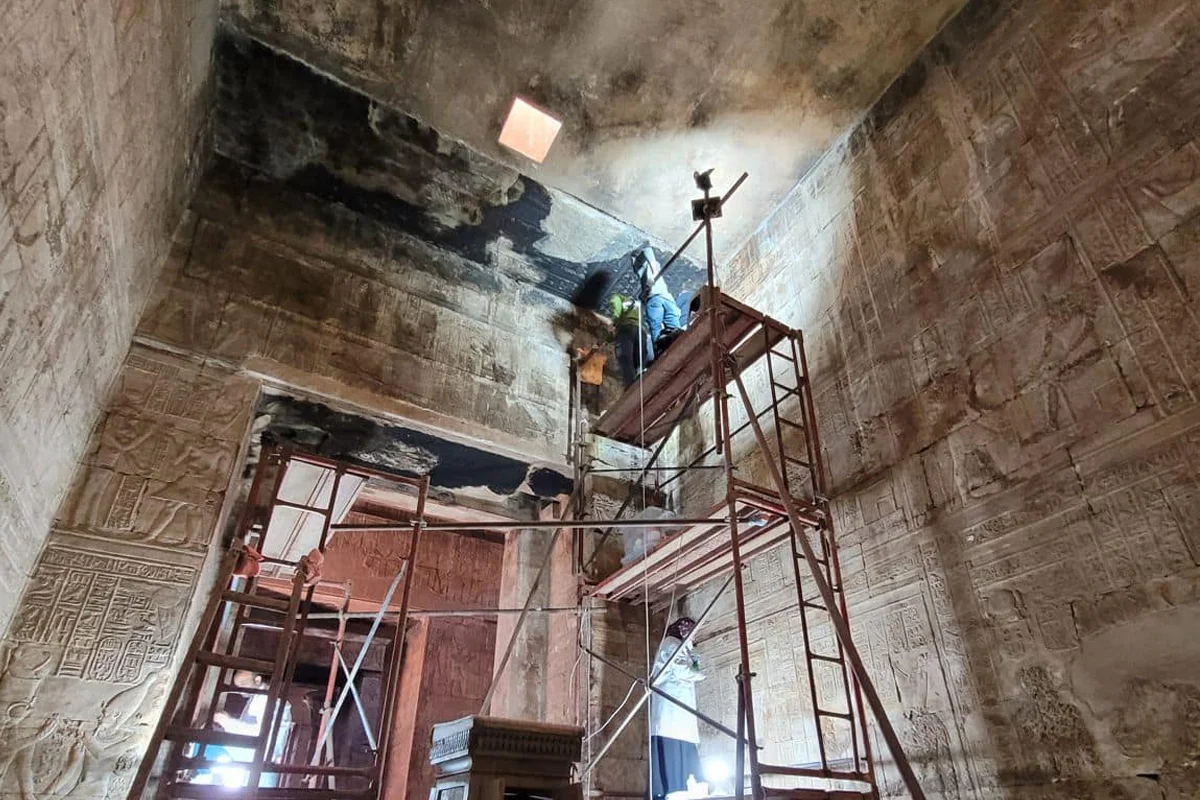A restoration project of Edfu Temple has restored the original colours of the temple’s interior carvings.
Edfu was one of several temples built during the Ptolemaic Kingdom, located on the west bank of the Nile in Edfu, Upper Egypt. Construction was started during the reign of Ptolemy III Euergetes (246 to 222 BC) and completed in 57 BC under Ptolemy XII Auletes.
Dedicated to Horus, the temple features some of the finest inscriptions and carvings on its interior walls, offering Egyptologists valuable insights into language, mythology, and religion during the Hellenistic period.
Following Theodosius I’s persecution of pagans and his AD 391 edict banning non-Christian worship throughout the Roman Empire, the Edfu Temple fell into disuse as a religious monument and some of the carved reliefs were razed by followers of the Christian faith.

As part of a joint archaeological mission between the Supreme Council of Archaeology and the German University of Würtsburg, archaeologists have restored many of the carvings to reveal the painted colours to their original condition.
The restoration project of the ceiling and walls of the Holy Shrine of the Temple has also revealed colourful landscapes and the writings of priests in Demotic calligraphy, in addition to traces of gold gild used on the carvings of royal jewels and insignia, as well as the bodies of gods from the Ancient Egyptian pantheon.
According to Mr. Ahmed Abdul Nabi, the project supervisor: “The team removed the dirt stuck on the surfaces, bird debris, soil and snails, as well as the accumulation of salts, resulting in the appearance of the residues of the original colours that were covering all the prominent carvings.”
Header Image Credit : Ministry of Tourism and Antiquites
Sources : Ministry of Tourism and Antiquites





